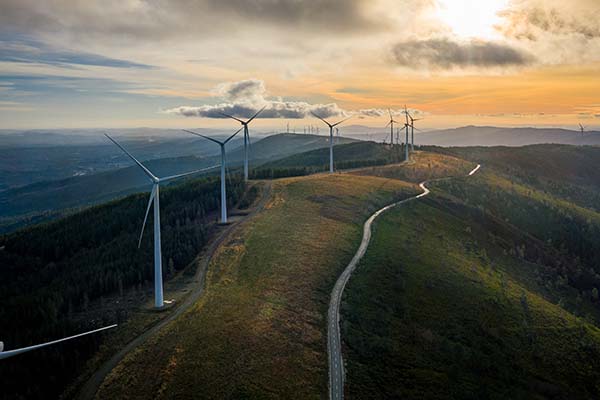Economic Prosperity in the Amazon Rainforest
Deforestation is often treated as inevitable to serve the economic needs of human populations, local and global. However, our research in the Peruvian and Colombian Amazon finds that forest loss is not inevitable. The research identifies opportunities to achieve shared prosperity without sacrificing the forest by increasing the complexity of the neglected cities of the Amazon.
At the Growth Lab, we have two decades of research into how to generate growth and prosperity. Through engagement with the Gordon and Betty Moore Foundation, we have developed research and policy options in two Amazonian contexts: Loreto in Peru, and Caquetá, Guaviare and Putumayo, in Colombia.
Lessons in Generating Shared Prosperity while Protecting the Forest in the Peruvian and Colombian Amazon
The central lesson of our research is that the perceived conflict between economic growth and forest protection fails to hold in the evidence from the Peruvian and Colombian Amazon. Many parts of the Amazon find themselves in the “lose-lose” scenario of low prosperity and high deforestation. Rates of deforestation differ across locales more than the rates of economic growth. Alarming increases in deforestation are not found to be accompanied by greater economic growth. This is due to the fact that the drivers of prosperity and deforestation are distinct – as they happen in different places. Deforestation occurs where the agricultural frontier meets the forest edge, often through extensive cattle-ranching. By contrast, the economic drivers in the Amazon are its urban areas often located far from the forest edge, including in non-forested piedmont regions. These cities offer greater economic complexity by accessing a wider range of productive capabilities in higher-income activities without those activities driving deforestation.
Read More About Generating Shared Prosperity
Achieving shared prosperity in the Amazon depends on the connectivity and opportunity in its urban areas. What a city is able to export or sell outside the city determines the success of the city. The economic challenge in the Amazon is that its cities do not export, in that they sell few things outside the city. This further limits the capacity to import those items the city does not produce. The need to expand exports to be able to afford the imported inputs for more complex activities describes a fundamental coordination challenge behind connectivity in the Amazon.
The strategy should be territorial across three geographies of opportunity: (i) in cities, through tourism services, transport services, professional services, and agro-processing industry; (ii) in rural non-forested areas, in more intensive crops and sustainable agroforestry; and (iii) in forest areas, based on ecotourism, carbon markets for reforestation, and forest protection services.
Additionally, the greatest promise for prosperity in the Amazon is to make forest protection the most profitable activity, particularly through carbon markets. Deforestation is driven by basic market economics: the private returns to owning deforested land are higher than the social returns of keeping that land as a forest. The goal of policy should therefore be to make forest protection and reforestation more profitable than cattle-ranching. Reforesting with carbon credits is not a profitable activity in any Amazonian country at today’s prices and with carbon titles that are unclear and costly to enforce.
Our researchers present a summary of the growth trajectory, economic complexity analysis, growth diagnostic, and policy report for each project. It concludes with the central lessons and key insights for an economic path forward in these regions.

The most underutilized tool for economic prosperity in the Amazon is its cities. Perhaps the most surprising facet of life in each of the four Amazonian regions studied is that the majority of people live in urban areas. This is a telling fact of economic geography: that even in the most remote parts of the Amazon, people want to come together to live in densely populated areas. How can one explain Iquitos, a city in Loreto deep in the forest that cannot be reached by road, but is home to more than 470,000 people? Yet Iquitos matches the findings of our global research that the secret to shared prosperity is productive knowhow – that as a society expands the range of knowhow available, it increases the diversity and complexity of its production.
A place grows by adding new knowhow to produce more, and more complex, things. To bring different knowhow together, people must live near each other. Hence, cities form, affording greater complexity and prosperity, and, crucially, city activities are not those linked to deforestation, like low complexity cattle-ranching.
Resources in the Amazon are being spent in the wrong direction, by targeting the forest not the cities. Because deforestation is happening in the forest, resources targeting forest conservation are being spent to support a small minority of families to improve their livelihoods. But just because a flat tire is flat at the bottom does not mean the hole is there. The source cause of deforestation in the Amazon is its stagnant, disconnected cities, where underinvestment in urban roads, water, sewage, and housing result in weak generation of higher income opportunities, despite being where the majority live. The solution to deforestation, as with that of creating shared prosperity, relies on generating better opportunities in cities to pull more people in from rural areas to reduce the pressure on expanding the agricultural frontier into the forest. This is consistent with our research: there are few global cases of generating prosperity in the forest, but vast examples of building thriving urban spaces. Shared prosperity is easier to achieve in urban areas than in the forest.

The defining feature of the Amazonian economies is its remoteness. The long distances and travel times to large markets outside the region present a significant constraint to competitiveness in each of the four regions studied. Yet these regions also face an additional “connectivity trap” that further limit the viability of economic diversification. The lack of quality, timely transport connections with external markets restricts the economy complexity of the Amazon and, in turn, the low complexity of the cities limits the returns to new investments.
In Colombia, transport costs from Amazonian cities to the rest of Colombia are exceedingly high, even when controlling for distance. Transport routes often depend on a single route, for which any disruption (e.g., blockades) adds costs and uncertainty. The lack of transport connectivity presents a binding constraint to the profitability of agro-processing and time-sensitive agroforestry products in many parts of the Colombian Amazon. The extreme isolation of Iquitos in Loreto results in a higher level of economic complexity than expected. Given the extensive time required for imports and exports to Iquitos, the research finds that a set of activities, such as beverage bottling, are viable to produce locally rather than import. This affords a more complex set of industries than those that would be competitive if exposed to import competition. However, this extreme remoteness also puts a ceiling on production at the level of local demand, as exports face these time requirements as a disadvantage in reaching external markets.
Affiliated Publications
HKS Executive Education
Leading Green Growth
Leading Green Growth: Economic Strategies for a Low-Carbon World is a new, one-week on-campus Executive Education program. Under the direction of faculty chairs Ricardo Hausmann and Daniel Schrag, you will gain a foundational understanding of decarbonization and its economic impact. You will also acquire the essential tools and knowledge to anticipate new trends, remain competitive, and achieve prosperity in a low-carbon future. Session dates: April 21 – 26, 2024


Projects
Loreto, Peru
Explore the research and meet the team behind our Promoting Sustainable Economic Growth and Structural Transformation project in Loreto, Peru.
Amazonian Regions in Colombia
Explore research papers, videos, photos and news coverage related to our Advancing Economic Development and Environmental Sustainability project in Colombia.

